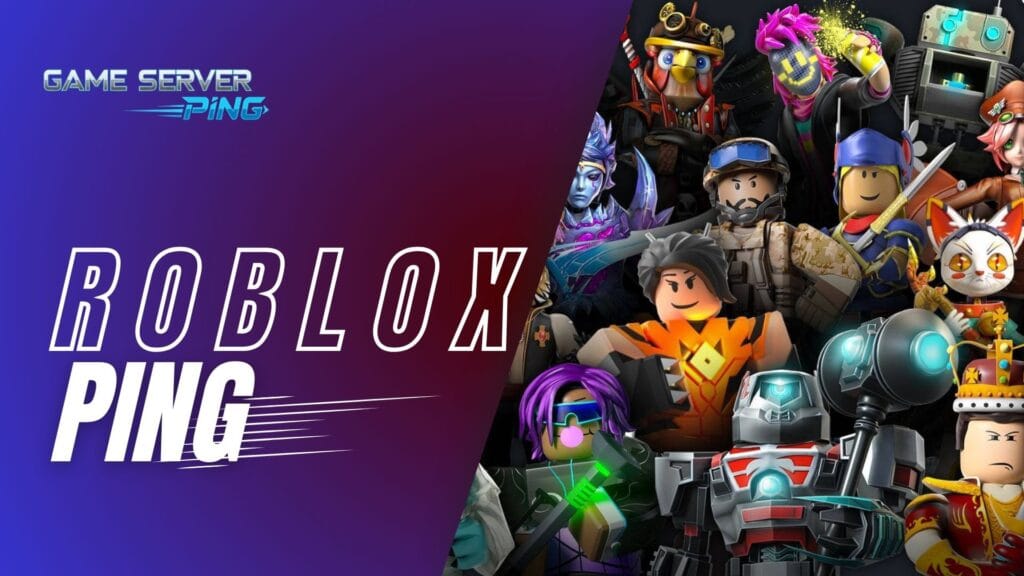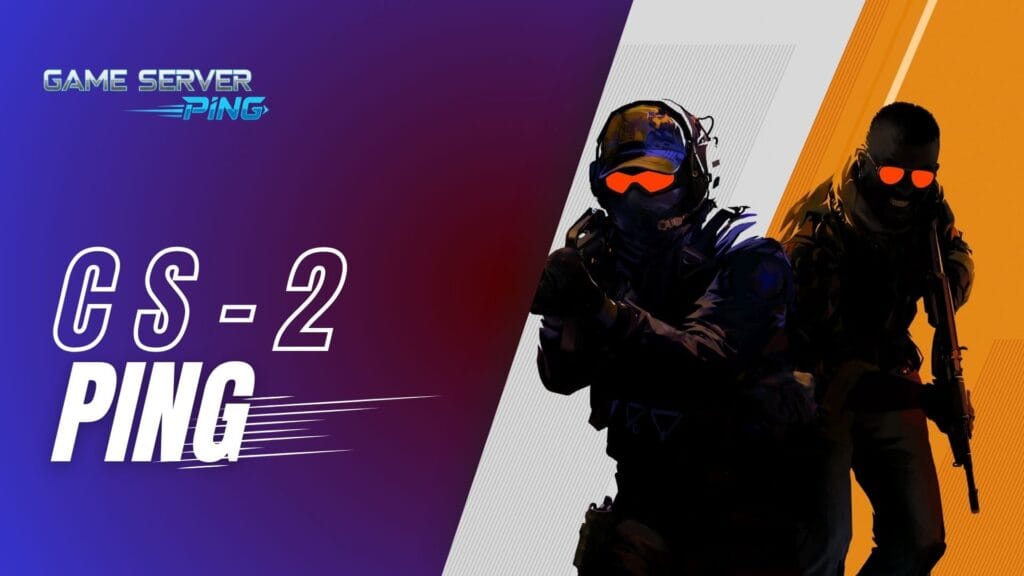Now Reading: Fortnite Ping Test Live – Check 22 Server Status
- 01
Fortnite Ping Test Live – Check 22 Server Status

Fortnite Ping Test Live – Check 22 Server Status
Why Ping Matters in Fortnite Gameplay
Every Fortnite player knows that even a split-second delay can mean the difference between clutching a Victory Royale or getting eliminated. That’s where ping comes in. In simple words, ping is the time it takes for your computer or console to send data to Fortnite’s servers and get a response back. A lower ping means faster response, smoother building, cleaner edits, and more accurate shots. On the other hand, high ping often results in lag spikes, delayed actions, and frustrating gameplay where your walls won’t place or your shots don’t register on time.
If you’re serious about Fortnite—whether you’re playing casually with friends or grinding competitive tournaments—understanding and controlling your ping is one of the most important factors for consistent performance.
Quick Overview of This Free Fortnite Ping Test Tool
To help gamers identify their best connection, this free Fortnite Ping Test tool checks your latency to official Fortnite servers across all regions including North America, Europe, Asia, South America, Middle East, Oceania, and India, you can see your live ping, average latency, and jitter stability to each server below.
This makes it super easy to:
- Find which server gives you the smoothest gameplay
- Compare latency between regions
- Troubleshoot whether your lag is caused by Fortnite servers or your own internet
Instead of guessing why your builds feel delayed, you’ll have real numbers in front of you—helping you choose the right region for the lowest ping.
Fortnite Server Ping Test
Use this free Fortnite Ping Test tool to check your latency to official Fortnite servers across regions including North America, Europe, Asia, South America, Middle East, and Oceania. See live ping, average latency, and jitter to find the best server for smooth gameplay.
 NA East (Virginia)
NA East (Virginia) NA Central (Ohio/Chicago)
NA Central (Ohio/Chicago) NA West (California)
NA West (California) NA Northwest (Oregon)
NA Northwest (Oregon) EU West (Dublin)
EU West (Dublin) EU West (Paris)
EU West (Paris) EU Central (Frankfurt)
EU Central (Frankfurt) EU North (Stockholm)
EU North (Stockholm) South America (São Paulo)
South America (São Paulo) Asia (Tokyo)
Asia (Tokyo) Asia (Seoul)
Asia (Seoul) SEA (Singapore)
SEA (Singapore) Oceania (Sydney)
Oceania (Sydney) India (Mumbai)
India (Mumbai) Middle East (Bahrain)
Middle East (Bahrain) Asia (Hong Kong)
Asia (Hong Kong)
What Is Ping in Fortnite?
Simple Explanation of Ping and Latency for Gamers
Ping, often called latency, is basically the time it takes for your device to communicate with Fortnite’s servers and get a reply back. Think of it like throwing a boomerang—your command (like placing a wall or firing a shot) leaves your PC or console, travels to the server, and then comes back with confirmation. The time this round trip takes is measured in milliseconds (ms).
- A low ping (for example, 20–40ms) means your actions feel instant—your builds place smoothly, edits are snappy, and shots land exactly when you fire.
- A high ping (like 100ms and above) means you’ll start to notice delays—walls might not place in time, edits can feel sluggish, and enemies can sometimes shoot you before your screen even shows them peeking.
That’s why every competitive Fortnite player chases the lowest ping possible—it makes the difference between playing reactively and playing ahead of your opponent.
You can Also Check Fortnite Server Status Live
Difference Between Ping, Jitter, and Packet Loss
While most players only talk about ping, there are two other important factors that affect your Fortnite experience:
- Ping (Latency): The time it takes for data to travel between your device and the Fortnite server. Lower is always better.
- Jitter: The variation or instability in your ping. Even if your ping shows 40ms, if your jitter is high, that number might jump around to 70ms or 100ms at random moments, causing unpredictable lag spikes.
- Packet Loss: This happens when some of your data doesn’t reach the server at all. For Fortnite, packet loss feels like rubber-banding, shots not registering, or builds disappearing even though you placed them.
In short:
- Low ping = smooth gameplay
- Low jitter = consistent response time
- Zero packet loss = reliable performance
That’s why the Fortnite Ping Test tool doesn’t just show your live ping—it also highlights average latency and jitter, so you know whether your connection is stable enough for high-level gameplay.
Why Fortnite Ping Test Tool Is Useful
Instant Server Response Insights
One of the biggest frustrations in Fortnite is not knowing whether the lag you feel is because of your internet, your device, or the Fortnite servers themselves. This tool takes away the guesswork. With just a click, you get live ping readings from every official Fortnite server region. Just like our Valorant Ping Test Tool, this Fortnite ping checker instantly shows which server gives you the smoothest gameplay.
That means you instantly see which servers are giving you smooth gameplay and which ones are lagging.
Instead of jumping into a match blind and realizing your builds feel delayed, you’ll already know your connection status before even queuing up.
Helps Identify the Best Server Region for Smoother Matches
Fortnite automatically tries to place you on the closest server, but that doesn’t always mean it’s the best one for you. Sometimes your nearest server is congested, giving you higher ping than usual. The ping test tool shows you all regions side by side—from NA East and West, to Europe, Asia, South America, Middle East, Oceania, and India.
By comparing your results, you can easily pick the server with the lowest latency and most stable connection. For example, if your local server gives you 80ms but another nearby server shows 40ms, switching regions could instantly improve your gameplay.
Gamer-to-Gamer Advice: How It Improves Your Competitive Edge
If you’re a casual Fortnite player, lower ping just makes the game more fun—your edits feel cleaner, your shots connect better, and you don’t rage over laggy fights. But if you’re playing competitive matches or tournaments, ping isn’t just a preference—it’s an advantage.
Here’s why:
- Low ping = faster builds: You’ll win more wall takes and box fights because your edits register before your opponent’s.
- Stable connection = consistency: No random lag spikes mid-fight means you can rely on your mechanics every time.
- Better awareness: With smoother gameplay, you can focus on strategy and aim rather than worrying about delayed actions.
Think of it this way: in competitive Fortnite, every millisecond counts. Using this tool before matches ensures you’re not handicapping yourself by playing on the wrong server.
Supported Fortnite Server Regions
One of the best parts about this Fortnite Ping Test tool is that it doesn’t just check your connection to one server—it lets you test all the official Fortnite regions. That means you can compare results and find the region that gives you the lowest ping before hopping into a match.
Here’s a breakdown of the supported regions:
North America
- NA East (Virginia) – Popular for players on the U.S. East Coast and Canada.
- NA Central (Ohio/Chicago) – Balanced option for players in central U.S. regions.
- NA West (California) – Best for West Coast players like those in California and nearby states.
- NA Northwest (Oregon) – Another strong option for players in the Pacific Northwest.
Europe
- EU West (Dublin & Paris) – Covers Ireland, France, and surrounding regions.
- EU Central (Frankfurt) – Ideal for Germany and central European players.
- EU North (Stockholm) – Solid pick for players in Scandinavia.
Asia
- Asia (Tokyo) – Best for players in Japan.
- Asia (Seoul) – Strong option for South Korean players.
- Asia (Hong Kong) – Works well for players in Southern China and nearby areas.
- SEA (Singapore) – Covers Southeast Asia including Malaysia, Indonesia, and nearby regions.
- India (Mumbai) – Designed for players across India and nearby South Asian countries.
South America
- South America (São Paulo) – The main server hub for Brazil and surrounding countries.
Middle East
- Middle East (Bahrain) – Best option for players in the Gulf region and nearby areas.
Oceania
- Oceania (Sydney) – Built for players in Australia and New Zealand.
Why Regional Ping Matters for Performance
The closer you are to a server, the lower your ping will usually be. But sometimes, it’s not just about distance—it’s about stability. A player in Texas might technically be closer to NA East, but depending on their internet routing, NA Central could actually give them better results. That’s why testing across multiple servers is so important.
By knowing which region gives you the lowest and most stable ping, you can:
- Reduce input delay during builds and edits
- Avoid random lag spikes in fights
- Gain a small but meaningful edge over opponents
Ideal Ping Values Explained
What Is Considered “Good” Ping for Fortnite
In Fortnite, ping is measured in milliseconds (ms), and the lower the number, the better. For most players, anything under 50ms is considered very good. At this level, your actions feel smooth, builds place instantly, and you don’t notice any delay.
If your ping is higher, it doesn’t automatically mean the game is unplayable—but the higher it goes, the more delay you’ll feel in edits, shots, and movement.
Acceptable Ping Ranges for Casual Play
Here’s a quick breakdown of what different ping ranges feel like in real matches:
- 0–30ms: Nearly perfect. Every action feels instant.
- 30–60ms: Still very smooth. Most casual players won’t even notice delay.
- 60–100ms: Playable, but you may notice slight input lag, especially in fast build fights.
- 100–200ms: Doable for casual play, but lag becomes more noticeable in every fight.
- 200ms+: Frustrating to play on—delayed builds, missed edits, and slow reactions.
So, for casual fun, anything below 100ms is fine. But if you’re serious about competing, you’ll want much lower.
Best Ping for Competitive Matches (Pro Gamer Advice)
In competitive Fortnite, every millisecond counts. That’s why pro players always aim for the lowest ping possible. Ideally:
- 0–20ms: The sweet spot for competitive play. At this level, your edits, walls, and shots register faster than your opponent’s.
- 20–40ms: Still very strong—most pros are comfortable here and can compete at a high level.
- 40–60ms: Manageable, but you’ll be at a slight disadvantage against players with lower ping.
- 60ms+: Not ideal for competitive. You’ll lose more wall fights, edits will feel delayed, and you’ll struggle in endgame zones where milliseconds matter.
That’s why pro players often use tools like this Fortnite Ping Test before scrims or tournaments. By making sure they’re connected to the best possible server, they give themselves the edge needed to win fights and survive stacked lobbies.
In short:
- Casual Fortnite = under 100ms is fine
- Competitive Fortnite = aim for 0–40ms for the best results
Common Fortnite Ping Issues and Fixes
Even if you normally have good ping, Fortnite sometimes throws curveballs—random spikes, connection drops, or the dreaded 9999 ping. Below are the most common issues players face and the fixes that actually work.
The 9999 Ping Error in Fortnite
If you’ve ever loaded into a match and seen your ping suddenly skyrocket to 9999, don’t panic—it doesn’t mean your internet is broken forever. This usually happens because:
- Your game failed to properly connect to the server.
- Epic’s servers are temporarily overloaded.
- Your router had a quick disconnect.
Fixes:
- Restart Fortnite and rejoin—most of the time, it fixes itself.
- Reboot your router to refresh the connection.
- Use the Fortnite Ping Test tool to see if the problem is your internet or Epic’s servers.
Random Ping Spikes (e.g., jumping from 20ms to 200ms)
You’re building fine, then suddenly your ping spikes—and you lose a fight. This usually comes from background internet usage or unstable Wi-Fi.
Fixes:
- Switch to Ethernet (wired connection). Wi-Fi is convenient, but cables give the most stable ping.
- Close background apps. Streaming, downloads, or even updates can cause spikes.
- Check for network congestion. If others are streaming or gaming at the same time, your ping will suffer.
Consistently High Ping (100ms+)
If your ping is always high, it may be because you’re connected to the wrong server region.
Fixes:
- Check Fortnite settings: Go to Settings > Game > Matchmaking Region and select the lowest ping option manually.
- Use the Ping Test tool: Identify which server actually gives you the best response time.
- Consider a gaming VPN: Sometimes routing through a VPN can reduce lag if your ISP takes poor routes to Fortnite servers.
Ping Spikes in Endgame (Arena & Tournaments)
In stacked lobbies, especially during endgame circles, your ping can climb even if your internet is fine. This isn’t always your fault—it’s often server load.
Fixes:
- Lower your graphics settings slightly (fewer frame drops = smoother gameplay).
- Make sure you’re on the correct server before the match.
- Accept that some lag in huge lobbies is inevitable—it’s about reducing it, not eliminating it.
Fortnite Ping Different from Other Games
Sometimes you’ll notice Fortnite has higher ping compared to Valorant, Apex, or Call of Duty. This doesn’t mean your internet is bad—it’s usually server placement.
Fixes:
- Compare ping across multiple Fortnite servers using the test tool.
- Stick to the server region with the lowest average ping, even if it’s not your default.
- If the issue persists, it may be Epic’s side—keep an eye on Fortnite Status updates.
Ping Fluctuates Between Good and Bad
One second you’re at 20ms, the next at 150ms, then back to 20ms. This is often due to unstable network routing.
Fixes:
- Restart your modem/router and update firmware if available.
- Use QoS (Quality of Service) settings on your router to prioritize gaming traffic.
- If you’re on Wi-Fi, interference from other devices (microwaves, phones, Bluetooth) can cause spikes—move closer to your router or switch to wired.
When It’s Not Your Fault (Epic Games Server Issues)
Sometimes no matter what you do, your ping will be terrible because Fortnite’s servers are struggling. Epic regularly updates servers, but outages happen.
Just like Fortnite, other games can also have downtime—for example, you can always check Valorant Server Status if you play both titles
Fixes:
- Check Epic’s Fortnite Status page or Twitter for updates.
- Use the Ping Test tool to confirm if multiple regions are laggy—it’s likely server-side.
- Wait it out—sadly, there’s nothing you can do until Epic fixes their end.
What is a good ping for Fortnite?
A good ping for Fortnite is generally under 30ms. This gives you smooth, instant gameplay, especially in build battles and edits. Anything under 60ms is fine for casual matches, but above 80ms you’ll start noticing input delay.
Does Fortnite ping you when you get messaged?
No—Fortnite does not send in-game pings when you get messages. “Ping” in Fortnite refers to your network latency (connection to the server), not notifications or alerts.
Why is my Fortnite ping higher than usual?
Your ping might be higher because:
You’re connected to the wrong server region.
Your internet is congested (downloads/streams running).
Fortnite servers are overloaded.
Running a Fortnite Ping Test can help you figure out if it’s your connection or Epic’s servers.
What causes Fortnite ping spikes?
Ping spikes usually happen due to unstable Wi-Fi, background apps using the internet, or ISP routing issues. Using a wired Ethernet connection and closing other apps can help stabilize your ping.
Can a VPN lower my Fortnite ping?
Sometimes, yes. A gaming VPN can reduce ping if your ISP is routing traffic inefficiently to Fortnite servers. However, it can also make things worse if the VPN adds extra distance. Test it carefully before using it for competitive matches.
Why is Fortnite ping different from other games?
Different games host their servers in different locations. Fortnite’s servers may be farther from you compared to Valorant, Apex, or Call of Duty, which is why your ping isn’t always the same across games.
Can I play Fortnite competitively with 60–80ms ping?
Yes, but it’s harder. Many pros play under 20ms, giving them a faster response in fights. At 60–80ms, you’ll need strong game sense and aim to compete, but it’s still possible.
How do I check my ping in Fortnite?
ou can enable it in-game:
Go to Settings.
Open the Game UI tab.
Toggle Net Debug Stats ON.
Your ping will then show in the top-left corner during matches.
Why do I get 9999 ping in Fortnite?
That’s usually a temporary server connection issue. Restart the game, reboot your router, and test your ping with the Fortnite Ping Test tool. If it keeps happening, it may be Epic’s servers.














